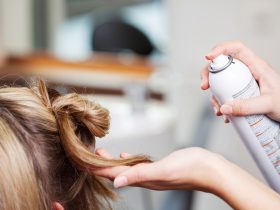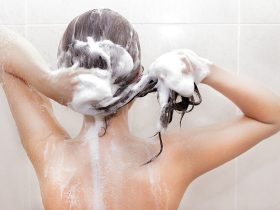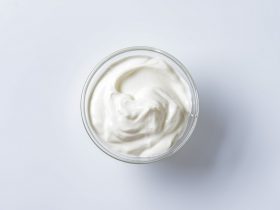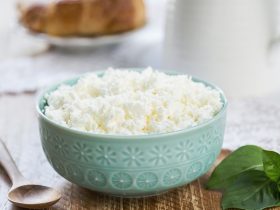Nail polish generally contains chemical ingredients that are harmful to human beings. These chemicals can be absorbed through the skin and the nail bed to enter the bloodstream and pass into the placenta resulting in risk for mother and baby. The fumes released from nail polish (and nail polish remover) can similarly be absorbed into the bloodstream via the lungs and become toxic.
While some people will tell you that it is safe to use nail polish as directed, in small amounts and in well-ventilated spaces, it is recommended to avoid nail polish that does contain potentially toxic chemicals.
Problematic Ingredients or Chemicals Found in Nail Polish
Read the label on the bottle and avoid the following chemicals:
Formaldehyde
Formaldehyde is most commonly associated with funeral homes and is used to preserve bodies after death. In nail polish, the same chemical is used as a preservative and to allow the nail polish to harden and dry faster. Quick-dry nail polish often contains formaldehyde.
Hazards During Pregnancy
Formaldehyde results in mild to severe general health conditions, including cancer and respiratory problems. It also irritates the eyes, nose, and throat when inhaled. There are additional health risks associated with pregnancy including:
- Fertility problems
- Increased risk of miscarriage
Formaldehyde is also known to pass into breast milk in amounts that are insufficient in nail polish to be considered hazardous.
Level of Risk
The level of risk for using nail polish containing formaldehyde is considered to be relatively low. Extreme or extended exposure and ingestion may result in the above-mentioned risks associated with formaldehyde during pregnancy and breastfeeding.
However, formaldehyde may have a cumulative effect with increasing exposure. Therefore, the use of other beauty products that may also contain this chemical as a preservative should also be taken into account.
Dibutyl Phthalate (DBP)
DBP is commonly used in PVC (plastic) to render it more flexible. In nail polish, the chemical is used as a dye solvent and as a plasticizer which prevents it from becoming brittle.
Hazards During Pregnancy
There are a number of different general and pregnancy-related hazards associated with exposure to DBP:
- May alter key pregnancy hormones resulting in a shortening of the area between the anus and genitals of male babies resulting in reduced sperm count and infertility later in life (decreased anogenital distance)
- Increased weight gain and impaired glucose tolerance in the mother during pregnancy (James-Todd et al., 2016), which may result in gestational diabetes or type II diabetes around 1 year after birth
- Increased risk of miscarriage
Level of Risk
Currently, the level of risk for pregnant and breastfeeding mothers still needs to be established. It is unclear what level of exposure results in the above-mentioned hazards.However, it is highly recommended to avoid this chemical entirely during pregnancy and while breastfeeding until more information becomes available. The FDA (Food and Drug Administration) has issued warnings regarding exposure to DBP during pregnancy.
It is, likewise, important to note that not all manufacturers may list DBP or other phthalates as ingredients. This is due to the fact that the chemical is used as a fragrance in many types of beauty products. Fragrances are considered to be trade secrets and manufacturers are therefore not required to list the ingredients. Although DBP is not used as a fragrance in nail polish, the manufacturer may still not list this ingredient.
A study by Young et al. in 2018 highlighted the inconsistencies in nail polish labels. They reviewed 40 nail polishes from 12 popular brands, and found that phthalates, or triphenyl phosphate (another endocrine-disrupting plasticizer used to replace phthalate), were still present despite being labeled “free” of this compound.
Toluene
Toluene, also called methylbenzene, is a hydrocarbon that is commonly used as an industrial solvent primarily in paint thinners. In nail polish, it is used to prevent the product from drying out and is responsible for the smooth finish.
Hazards Associated with Pregnancy
Exposure to toluene results in irritation of the eyes, nose and throat and may also lead to dizziness, feeling lightheaded and weakness. These can result in respiratory and other serious health conditions.
According to Donald et al. (1991), the following hazards are associated with toluene exposure during pregnancy:
- Intrauterine growth retardation
- Premature delivery
- Congenital malformations
- Developmental retardation
In 2019, Ma et al. found that miscarriage rate among nail salon female workers was 15.6%, and that toluene was one of the compounds they were exposed to.
Level of Risk
The level of risk is directly related to the level of exposure. The greater the exposure, the greater the risk for pregnancy complications. Nail polish contains what is considered to be tolerable levels of toluene when used as directed by the manufacturer.
Precautions When Using Nail Polish During Pregnancy

It is important to take safety precautions when using nail polish during pregnancy. It is highly recommended to avoid using any nail polish that contains the chemicals or derivatives of formaldehyde, dibutyl phthalate and toluene.
Even if these chemicals are not listed as ingredients on the label of a nail polish, it is still recommended to take the following precautions:
- Use nail polish in a well-ventilated area. Exposure to these chemicals via inhalation results in increased levels of toxicity. Inhalation of the toxic chemicals passes into the bloodstream, and therefore the placenta, resulting in risks to both the mother and fetus during pregnancy. In some cases, this toxicity may also pass into breast milk.
- Avoid contact with the skin around the nail. Toxic chemicals contained in the nail polish my pass through the skin, into the bloodstream.
- Do not apply nail polish to buffed nails. Buffing removes the protective outer layer of the nail called the plate allowing toxic chemicals in nail polish to be absorbed through the nail bed and into the bloodstream.
- Read ingredients in other beauty or care products that may contain the above-mentioned toxic chemicals. Exposure may be cumulative and unknowingly result in increased levels of toxicity and therefore increased risks.
Final Thoughts
Acute symptoms of skin and respiratory irritation have been consistently found among several researches regarding nail polish and its harmful consequences. However, chronic adverse health effects, such as pregnancy complications and poor birth outcomes, are still uncertain (Huynh et al., 2020).
In addition, these effects are only actually seen with chronic exposure or acute poisoning, and are more commonly associated with nail salon workers. Hence, according to some experts, getting your nails done should not be a worry even if you are pregnant. Long-term exposure with huge amounts of doses is what typically leads to complications.
References
- https://www.ncbi.nlm.nih.gov/pmc/articles/PMC1567945/
- Donald, J. M., Hooper, K., & Hopenhayn-Rich, C. (1991). Reproductive and developmental toxicity of toluene: A review. Environmental Health Perspectives 94, 237-244. doi: 10.1289/ehp.94-1567945
- https://www.osha.gov/SLTC/toluene/health_hazards.html
- https://en.wikipedia.org/wiki/Toluene
- https://www.futurity.org/phthalates-pregnancy-hormones-869302/
- https://www.hsph.harvard.edu/news/features/phthalates-exposure-pregnancy-loss-gestational-diabetes/
- https://www.cdc.gov/niosh/topics/repro/formaldehyde.html
- https://davidsuzuki.org/queen-of-green/dirty-dozen-dibutyl-phthalate/
- James-Todd, T., Meeker, J., Huang, T., Hauser, R., Ferguson, K., Rich-Edwards, J., McElrath, T., & Seely, E. (2016). Pregnancy urinary phthalate metabolite concentrations and gestational diabetes risk factors. Envrironment International 96, 118-126. doi: 10.1016/j.envint.2016.09.009
- Young, A., Allen, J., Kim, U., Seller, S., Webster, T., Kannan, K., & Ceballos, D. (2018). Phthalate and organophosphate plasticizers in nail polish: Evaluation of labels and ingredients. Environmental Science & Technology 52(21), 12841-12850. doi: 10.1021/acs.est.8b04495
- Ma, G., Wei, Z., Husni, R., Do, P., Zhou, K., Rhee, J., Tan, Y., Navder, K., & Yeh, M. (2019). Characterizing occupational health risks and chemical exposures among Asian nail salon workers on the east coast of the United States. Journal of Community Health 44(6), 1168-1179. doi: 10.1007/s10900-019-00702-0
- Huynh, T., Doan, N., Trinh, N., Verdecias, N., Stafford, S., & Caroll-Scott, A. (2020). Factors influencing health and safety practices among Vietnamese nail salon technicians and owners: A qualitative study. American Journal of Industrial Medicine 62(3), 244-252. doi: 10.1002/ajim.22947




